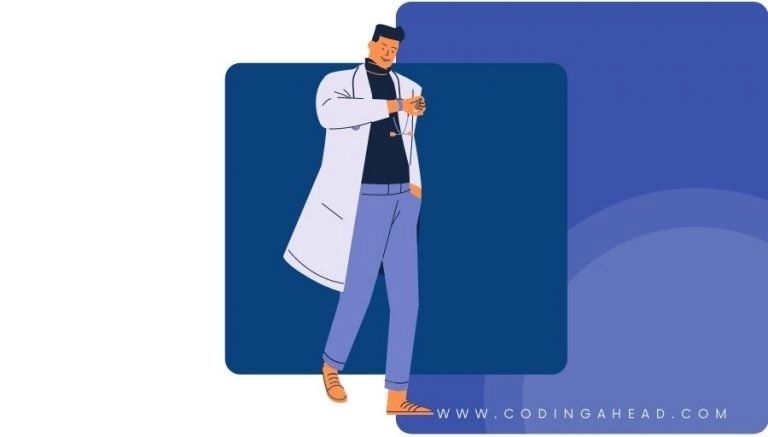How To Use CPT Code 44204
CPT 44204 refers to a laparoscopic partial colectomy with anastomosis, and this article will cover its description, procedure, qualifying circumstances, usage, documentation requirements, billing guidelines, historical information, similar codes, and examples.
1. What is CPT 44204?
CPT 44204 is a medical billing code used to describe a laparoscopic partial colectomy with anastomosis. This is a minimally invasive surgical procedure in which a portion of the colon is removed and the remaining ends are reconnected to restore continuity. The code is used by medical professionals to accurately document and bill for this specific procedure.
2. 44204 CPT code description
The official description of CPT code 44204 is: “Laparoscopy, surgical; colectomy, partial, with anastomosis.”
3. Procedure
- The patient is prepped and anesthetized.
- A small incision is made, and gas is insufflated into the abdomen to lift the abdominal wall away from the organs, improving visualization.
- Additional small incisions are made, and trocars are inserted to allow the introduction of a camera and instruments to perform the procedure.
- The provider enters the abdomen and cuts apart any adhesions.
- With the help of the laparoscope, the provider manipulates the instruments to determine the portion of the colon for removal.
- The provider excises the target part of the colon and takes it out through an incision (partial colectomy).
- For the anastomosis part of the procedure, the provider reconnects the cut ends (such as by stapler) in an end-to-end or end-to-side manner to restore colon continuity.
- The provider removes the instruments and the laparoscope, and closes the incisions.
4. Qualifying circumstances
Patients eligible to receive CPT code 44204 services are those who require a partial colectomy due to conditions such as colon cancer, diverticulitis, inflammatory bowel disease, or other medical issues affecting the colon. The decision to perform a laparoscopic partial colectomy with anastomosis is typically made by the surgeon after evaluating the patient’s medical history, symptoms, and diagnostic test results. The procedure may not be suitable for all patients, and the surgeon will consider factors such as the patient’s overall health, the location and size of the affected colon segment, and any previous abdominal surgeries.
5. When to use CPT code 44204
It is appropriate to bill the 44204 CPT code when a laparoscopic partial colectomy with anastomosis has been performed by a qualified healthcare provider. The code should be used to accurately document and bill for this specific procedure, ensuring that the medical professional is reimbursed for their services.
6. Documentation requirements
To support a claim for CPT 44204, the following information should be documented in the patient’s medical record:
- Indication for the procedure, such as the diagnosis or condition requiring the partial colectomy
- Details of the patient’s medical history and preoperative evaluation
- Description of the surgical procedure, including the steps taken, instruments used, and the portion of the colon removed
- Details of the anastomosis technique used to reconnect the colon
- Postoperative care instructions and follow-up plan
7. Billing guidelines
When billing for CPT code 44204, it is essential to follow the guidelines and rules set forth by the payer, such as Medicare or private insurance companies. Some payers may require preauthorization for the procedure, while others may have specific documentation requirements. It is also important to verify the patient’s insurance coverage and benefits before performing the procedure to ensure proper reimbursement. Additionally, be aware of any applicable modifiers that may need to be appended to the CPT code to provide further information about the procedure or the patient’s condition.
8. Historical information
CPT 44204 was added to the Current Procedural Terminology system on January 1, 2002. In 2017, it was added to the Medicare Inpatient Only (IPO) list.
9. Similar codes to CPT 44204
There are several other codes related to colon surgery that differentiate from CPT 44204:
- CPT 44140: This code is used for an open partial colectomy with anastomosis, which involves a larger incision and a more invasive approach.
- CPT 44205: This code describes a laparoscopic partial colectomy with removal of the terminal ileum and ileocolostomy, which involves resecting a portion of the small intestine in addition to the colon.
- CPT 44207: This code is for a laparoscopic total colectomy with ileorectal anastomosis, which involves the removal of the entire colon and reconnection of the ileum to the rectum.
- CPT 44208: This code refers to a laparoscopic total colectomy with ileostomy, in which the entire colon is removed, and an ileostomy is created for waste elimination.
- CPT 44210: This code is used for a laparoscopic total proctocolectomy with ileal pouch-anal anastomosis, which involves the removal of the entire colon and rectum, and the creation of an ileal pouch to restore bowel continuity.
10. Examples
Here are 10 detailed examples of CPT code 44204 procedures:
- A 55-year-old patient with colon cancer undergoes a laparoscopic partial colectomy with anastomosis to remove the tumor and surrounding tissue.
- A 40-year-old patient with severe diverticulitis requires a laparoscopic partial colectomy with anastomosis to remove the affected segment of the colon.
- A 60-year-old patient with Crohn’s disease undergoes a laparoscopic partial colectomy with anastomosis to remove a diseased portion of the colon.
- A 45-year-old patient with a large colon polyp that cannot be removed endoscopically undergoes a laparoscopic partial colectomy with anastomosis.
- A 50-year-old patient with a history of chronic constipation and colonic inertia undergoes a laparoscopic partial colectomy with anastomosis to improve bowel function.
- A 65-year-old patient with a colonic stricture due to radiation therapy undergoes a laparoscopic partial colectomy with anastomosis to relieve the obstruction.
- A 70-year-old patient with a sigmoid volvulus, a twisting of the colon, undergoes a laparoscopic partial colectomy with anastomosis to correct the issue.
- A 35-year-old patient with ulcerative colitis undergoes a laparoscopic partial colectomy with anastomosis to remove a severely inflamed segment of the colon.
- A 47-year-old patient with a history of multiple colon resections due to recurrent diverticulitis undergoes a laparoscopic partial colectomy with anastomosis to remove the remaining diseased colon.
- A 52-year-old patient with a colonic fistula, an abnormal connection between the colon and another organ, undergoes a laparoscopic partial colectomy with anastomosis to repair the fistula and remove the affected colon segment.




